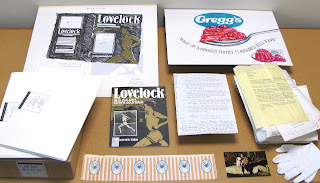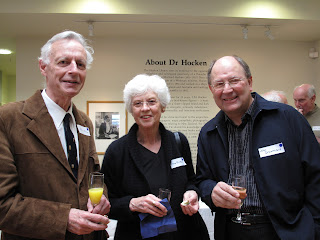In November 2008 Hocken was offered further records of the printing and publishing company John McIndoe Ltd, following the liquidation of successor firm Rogan McIndoe Print Ltd. McIndoes had been established in 1893, and its publishing arm flourished from 1968 through to the 1990s under editors Peter Stewart, Brian Turner, and Barbara Larson.
On 17 November we appraised and collected records from the former company buildings in Crawford Street. Storage conditions were dry and the records were generally in good condition. Many were stored in cupboards and bundled according to publication titles, others were found in boxes on shelves, in loose piles on the floor, or tucked away in odd drawers and corners. We picked our way through two large floors of the rambling old buildings and eventually took 16 shelf metres of records back to the Hocken. These were added to a similar quantity of records we had received between 1978 and 1985, but which mostly remained unlisted. Much of the material was neatly wrapped in parcels with paper printed with the elegant cat logo of McIndoes.
From February 2009 to January 2010, thanks to funding from the New Zealand Lotteries Grants Board, Project Archivist Sally Milner fully arranged and described all of our McIndoe holdings, packaging them in preservation-quality enclosures, and listing them in detail on Hakena.
The collections contain a wide array of material relating to the publishing and printing activities of the company. They include authors’ book files and other papers relating to literary projects, correspondence, financial records, photographs, and artwork. Authors and poets who are represented in the collection include Roderick Finlayson, Owen Marshall, Cilla McQueen, Vincent O’Sullivan, Philip Temple, and Hone Tuwhare, to name but a few.
The collection, which occupies some 25 shelves, is already proving valuable for research into printing and publishing history, individual authors, and related subjects.
Our special thanks goes to Lawrie Forbes of Zealsteel, owner of the McIndoe buildings, for ensuring that records were not destroyed following the company liquidation, and arranging for their donation to the Hocken.
This post was prepared by Arrangement and Description Archivist, Debbie Gale, and Assistant Archivist, David Murray.







